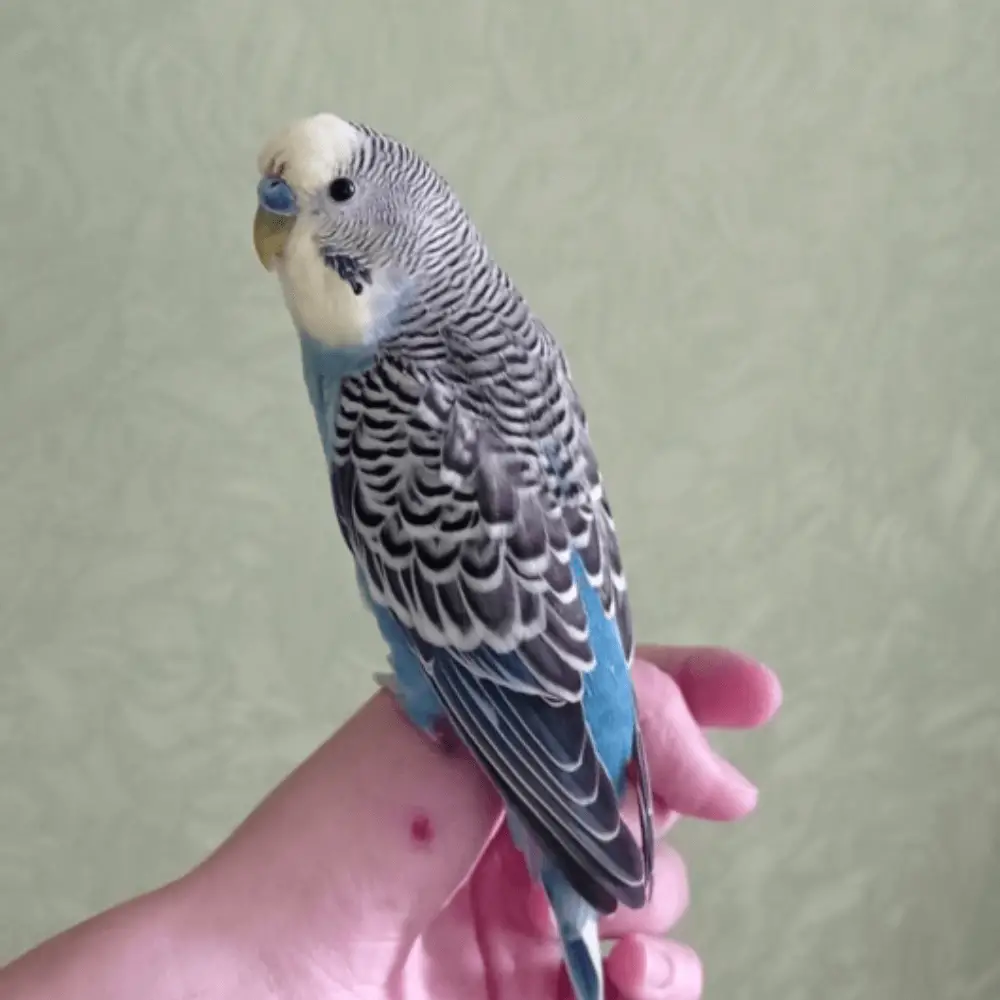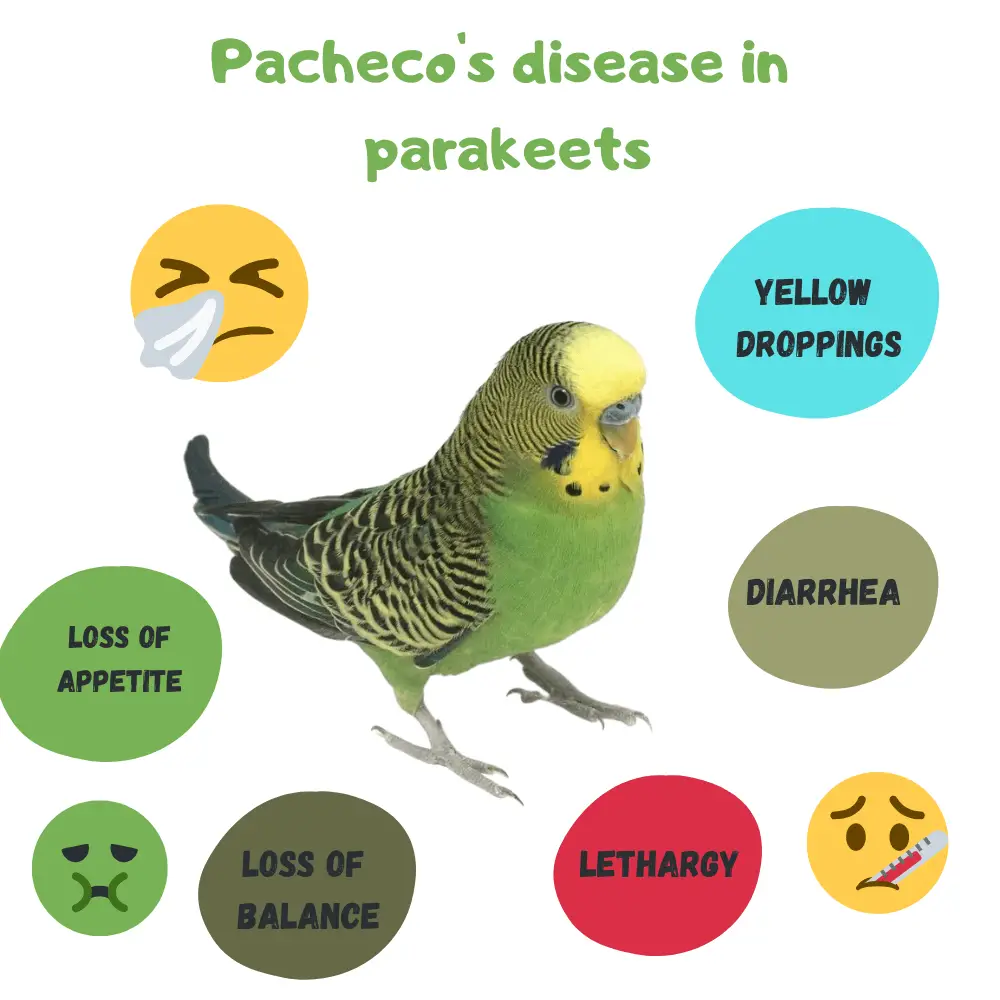What are the diseases of parakeets? How do you know if your parakeet is sick? What should I do if my parakeet loses its feathers? In the wild, birds rarely show signs of weakness or illness, which is why it is quite difficult to identify whether a parakeet is sick or not. A sick parrot is more vulnerable to different predators and showing symptoms of any illness can be enough to exclude it from the group in the wild.
Therefore, it may appear that a bird dies suddenly, when in fact slight signals indicating a health problem could have been detected by its owner. Here are some tips for recognizing if a parakeet is sick and learning about the most common diseases in this bird.
Diseases of parakeets

There are symptoms and signs of illness in parakeets. Identifying specific symptoms allows you to detect the onset of illness in parakeets as early as possible. To do this, it is important to know your bird well, to take care of it on a daily basis, and to differentiate between normal, suspicious, and potentially dangerous behaviors and signals in order to consult an avian specialist as soon as possible. Indeed, it can be very difficult to diagnose what are the parakeet diseases and their symptoms.
Parakeet behavior

Disease in parakeets can be identified by different behaviors, particularly in terms of activity. A sick parakeet is less active, sleeps more, is apathetic, often keeps her eyes closed, and is withdrawn.
Additionally, the parakeet in poor health may appear despondent and no longer pay attention to its surroundings. She no longer shows signs of curiosity and gradually loses her appetite. She also demonstrates increasingly solitary behavior even toward her companion.
The condition of a sick parakeet can deteriorate very quickly, it is imperative to notice these signs of illness by studying the behavior and attitude of the parakeet every day to avoid irreparable damage. As soon as a change in its eating habits, its relationship with its owner and, or, other birds, is detected, consulting a specialist in birds or new pets is strongly recommended.
Physical signals of a sick parakeet

In addition to behavioral signals, warning signs of illness in parakeets can be physical. To do this, we mainly identify changes at these levels:
- Plumage
- Breathing
- Abnormal carriage (head and legs)
- Droppings
- Physical state (weight loss)
In terms of the bird’s appearance, changes can be noted in the plumage, with, for example, significant and constant molting, broken feathers, or relatively dull plumage. Likewise, an emaciated bird can reveal a health problem, also identifiable by a significant loss of appetite.
A problem in the bird’s posture, head tilted, carrying on two legs instead of one, is also a behavior to watch out for. Respiratory problems may also be detected. Noisy breathing, too light, or silent but painful for the animal can be a factor of an illness such as hepatitis or be due to a shock such as head trauma.
Finally, recognizing a sick bird also involves analyzing the droppings, which are indicative of health disorders. Indeed, by examining them every day, it is possible to detect possible infections, dietary imbalances, and kidney or liver problems for example. To do this, we will look for an abnormal decrease in the number of droppings, a change in color, the presence of blood, and an increase in urine and water in the stools.
The main diseases of parakeets

Many diseases affect parakeets such as acariasis or beak scabies. It can also be food poisoning, vitamin deficiency, infectious or respiratory diseases for example. Depending on the species of parakeet, certain diseases of this pet bird can be common. For example common diseases of a budgerigar or Kakariki. Here are three common parakeet diseases.
Mycosis in parakeets
Mycosis is an infection caused by a fungus and is referred to as a fungicidal infection. It often contaminates the bird when its state of health is poor, during drug treatment or nutritional problems for example. Mycosis is one of the main diseases and disorders affecting birds. The symptoms linked to mycosis are mainly breathing difficulties, coughing fits, groans and wheezing. In addition, problems with the opening and closing of the beak may be observed in affected birds. If you notice this type of symptom, the diagnosis of mycosis is made by taking a blood test. The treatment can then be administered by aerosol and will be accompanied by an antibiotic treatment to fight against opportunistic infections linked to this infectious disease in parakeets.
Salmonellosis in parakeets
Salmonellosis is a bacterial disease that can also affect parakeets, whether chronically or suddenly. Salmonellosis is caused by bacteria whose symptoms are vomiting,diarrhea, a loss of weight in the bird but it also causes nervous system disorders such as tremors and coordination problems. A bacteriological examination makes it possible to identify the salmonellosis bacteria. Once diagnosed, treatment for this disease is done with antibiotics.
Mange in parakeets
Mange in parakeets is caused by mites that dig into the bird’s beak and cere. The real name of this disease is acariasis. It results in visible scabs on the parakeet’s beak that are beige-white in color and which gradually crumble.
A kind of mushroom on the beak of a budgerigar for example. We can identify if the parakeet is infected because it scratches at these lesions. It is common to see beak mange in budgerigars.
By affecting the beak, this disease prevents the bird from eating as it should and can lead to serious eating disorders. To treat this infection, applying ointment or drops to the affected areas kills the parasites in one go.
For any information, particularly in case of doubt about the disease affecting the bird, consultation with an avian veterinarian remains the first step to consider. Indeed, parakeet scabies can be treated using appropriate anti-scabies treatments and solutions.
SOURCE: Denny the Budgie

